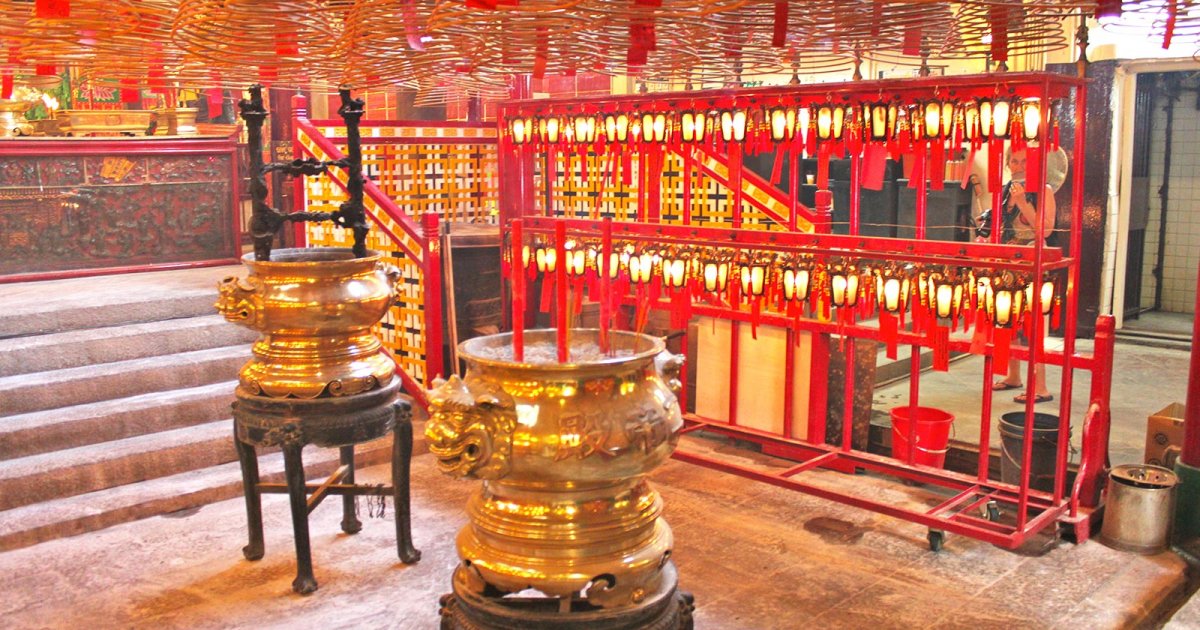MAN MO TEMPLE, Presentation
 Language: English / USA
Language: English / USA
Hi, my name’s Rick, and I’m your personal guide. Along with MyWoWo, I’d like to welcome you to one of the Wonders of the World: the Man Mo Temple.
The Man Mo Temple was built in 1847, during the Qing dynasty, on the orders of rich Chinese merchants.
You’ll find it in the modern Central District, packed in among numerous buildings.
It looks quite simple from the outside, in white stone with green pitched roofs and red friezes.
As you enter the courtyard at the front of the building, take a close look at the statues, the intricate decorations on the roof and the gilded writing in Chinese characters. You’ll see that the three predominant colors are green, red and gold: all three have a symbolic value, with green representing peace, red happiness and gold regality and strength.
You’ll see that there are three gates: each is in fact an entrance to a different temple.
Starting from the left, there is the Man Mo Temple, the Lit Shing Temple or Lit Shing Kung and the Kung So Assembly Hall.
I suggest you start with the first, the temple of two Taoist deities: Man, the god of literature, whose symbol is a quill, and Mo, the god of war, whose symbol is a golden sword.
Now press pause and enter.
The atmosphere inside is extremely alluring, permeated by the fragrance of incense and the soft lighting created by the many votive lanterns.
In addition to the numerous incense sticks in front of the altars, you’ll see large rolls resembling bells and burning slowly made from the same material hanging from the ceiling: these are votive offerings, with red parchments with prayers hanging from them.
The two statues of the gods Man and Mo are dressed in fine clothes, one in red and the other in green, and both are adorned with gilded headpieces. They are very popular with Chinese students, who pray to them for high marks.
The statues used to be carried in procession with two elaborately decorated, gilded palanquins you can still admire today.
An interesting fact: there are four plaques with writing on them addressed to visitors to the temple. Two are about the gods, one requests silence and respect, and the fourth reminds menstruating women that they are not allowed to enter the main hall.



